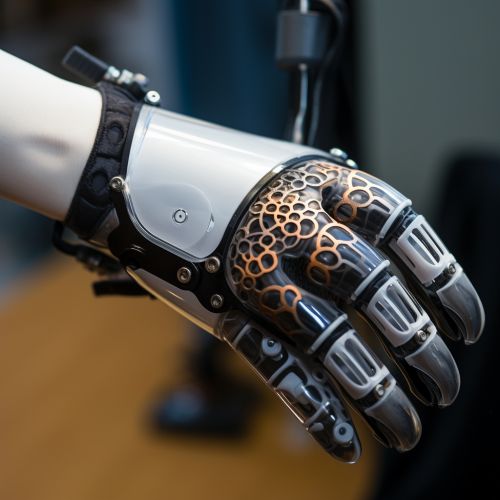Neuroprosthetics and Brain-Computer Interfaces
Introduction
Neuroprosthetics are devices that substitute or supplement the input or output of the nervous system, enabling individuals to perform tasks that were previously impossible due to disease or disability. They are a subset of biomedical engineering and neuroscience that focus on the development and application of electronic devices to restore or supplement the function of the nervous system.
Brain-Computer Interfaces (BCIs), on the other hand, are systems that establish a direct communication pathway between the brain and an external device. BCIs are often used in research, mapping, assisting, augmenting, or repairing human cognitive or sensory-motor functions.


History and Development
The concept of neuroprosthetics has been around for several decades, with the first cochlear implants being developed in the 1960s. However, it was not until the 1980s that the field began to take off, with the development of more sophisticated devices such as deep brain stimulators for the treatment of Parkinson's disease.
Similarly, the concept of BCIs has been around since the 1970s, but it wasn't until the 1990s that significant progress was made in this field. This was largely due to advances in computer technology, which allowed for the development of more sophisticated algorithms for interpreting brain signals.
Types of Neuroprosthetics
There are several types of neuroprosthetics, each designed to assist with a different type of function. These include sensory neuroprosthetics, motor neuroprosthetics, and cognitive neuroprosthetics.
Sensory Neuroprosthetics
Sensory neuroprosthetics are designed to replace or augment sensory input. The most well-known example of this is the cochlear implant, which is used to restore hearing in individuals with severe to profound hearing loss.
Motor Neuroprosthetics
Motor neuroprosthetics are designed to restore or augment motor function. This can include devices such as deep brain stimulation systems, which are used to treat movement disorders such as Parkinson's disease, and spinal cord stimulation systems, which are used to treat chronic pain.
Cognitive Neuroprosthetics
Cognitive neuroprosthetics are designed to augment or replace cognitive functions such as memory or attention. While this is a relatively new field, there are already several devices in development, including memory prosthetics for individuals with Alzheimer's disease.
Types of Brain-Computer Interfaces
There are two main types of BCIs: invasive and non-invasive.
Invasive BCIs
Invasive BCIs involve the implantation of electrodes into the brain. These electrodes are used to record brain activity, which is then translated into commands for an external device. Invasive BCIs have the advantage of providing high-resolution signals, but they also carry a higher risk of complications such as infection or damage to the brain.
Non-Invasive BCIs
Non-invasive BCIs do not require surgery and instead rely on techniques such as EEG to record brain activity. While these systems are safer and more comfortable for the user, they also tend to provide lower-resolution signals than invasive systems.
Applications
Neuroprosthetics and BCIs have a wide range of applications, from medical treatments to augmentative communication devices.
Medical Treatments
Neuroprosthetics are commonly used in the treatment of various neurological conditions, such as Parkinson's disease, chronic pain, and severe to profound hearing loss. BCIs, on the other hand, are often used in the treatment of conditions such as locked-in syndrome, where individuals are fully conscious but unable to move or communicate.
Augmentative Communication Devices
BCIs can also be used to develop augmentative communication devices for individuals with severe physical disabilities. These devices allow individuals to communicate by translating their brain activity into commands for a computer or other device.
Future Directions
The field of neuroprosthetics and BCIs is rapidly evolving, with new technologies and applications being developed all the time. Some of the most promising areas of research include the development of more sophisticated algorithms for interpreting brain signals, the integration of BCIs with virtual and augmented reality systems, and the development of neuroprosthetics that can adapt and learn from the user's behavior.
